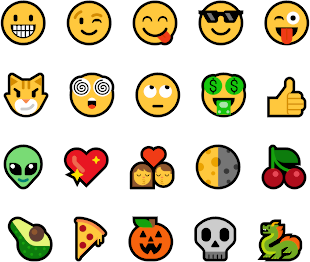Slug is a software library that has become the professional standard for rendering high-quality, resolution-independent text
and vector graphics in 3D applications on the GPU. It can be used for drawing graphical user interfaces, rendering heads-up displays,
showing debugging information, and placing text inside a 3D world or virtual environment.
| “Slug was an easy choice for us because of its high-quality results, excellent runtime performance, ease of integration, and source access.” —Zenimax Online |
“It’s super easy to integrate. Someone who hasn’t done gfx since fixed function pipeline got it working in our gfx code base in less than a day.” —Blizzard |
| “Slug is a great library that perfectly fits our needs.” —Quantic Dream |
“For our upcoming title it will be a no-brainer to go with Slug.” —Fatshark |
Slug renders shapes on the GPU directly from outline data composed of quadratic Bézier curves to produce
crisp text at any scale or from any perspective. There are no precomputed texture images or signed distance fields. Slug uses a
breakthrough mathematical algorithm, illustrated below, that we invented to
achieve perfect robustness with high performance, and it is the only existing GPU method that renders properly antialiased
glyphs with no artifacts under both magnification and minification.
Slug also provides text layout services that calculate the positions of the glyphs that are drawn for a given
string of Unicode characters. In addition to basic bounding box and advance width calculations, it can perform kerning,
ligature replacement, combining diacritical mark placement, character composition, and alternate substitution.
More high-level information is available on the Slug fact sheet.
Although Slug was originally designed only to render text, it can now draw generic vector graphics using the same
technology. Complex diagrams and vector drawings can be rendered at blazingly fast speeds directly on the GPU with
total resolution independence. We use these capabilities extensively in our Radical Pie equation editor,
where Slug renders complex equations with attached drawings and annotations as well as the entire GUI.
The full set of features provided by Slug is described in the Slug User Manual.
Demo
A demo of the Slug library for Windows is available here:
Download Slug Demo
(Updated 14-May-2025)
The demo contains several pages of text and vector graphics that highlight rendering capabilities and typographic features.
On most pages, left-clicking and dragging will scroll the scene, right-clicking and dragging will rotate the scene,
and moving the mouse wheel will zoom in and out.
The text on the seventh page of the demo can be changed by placing a file named story.txt in the same folder
as the demo application. This text file should be encoded as UTF-8, and up to 64 lines of it will be rendered in the demo.
The font used for this text is story.slug in the Fonts folder. By default, this is just a copy
of the Arial font, but you can change it by using the slugfont tool to import another .ttf or .otf file.
To do so, copy the font file into the Fonts folder, and execute the following command line with the actual font name:
slugfont <fontname> -o story.slug
Glyph Rendering

Each glyph is rendered by drawing a quad that covers its bounding box. (Because it’s only a box, it can be clipped or subdivided
to match another surface inside a 3D environment.) A specialized shader efficiently determines how much each pixel inside the box
is covered by the glyph using the original Bézier curve data stored in the font. Because no precomputed images or distance fields
are involved, the result is a sharp outline at all resolutions with no faceting or blurring. Slug has the ability to apply a couple
speed optimizations at large font sizes, one of which is rendering a tight bounding polygon instead of a plain box. The image to
the right was rendered by Slug using Times New Roman at a 500-pixel font size.

In addition to boring old letters and numbers, Slug can render full-color emoji and pictographs with the same
resolution independence that gives every contour a clean, crisp appearance at any scale. Slug supports the complete set of color
characters defined by Unicode, and it can handle skin tone modifiers as well as zero-width joiner sequences.
The image to the left was rendered by Slug using the Segoe UI Emoji font at a 40-pixel size. This font ships with Windows and
contains color layer data that elegantly provides the ability to scale multicolor emoji and pictographs with the same versatility
as conventional black-and-white glyphs.
The Product
Slug is distributed as a static library that has a basic C++ interface, and full source is included with every license. Slug is platform agnostic
and runs on Windows, Mac, Linux, iOS, Android, and all major game consoles. It can be used with Vulkan, Direct3D 10/11/12, OpenGL 3.0–4.6, Metal, and WebGL2.
The API is fully documented in the Slug User Manual.
The primary function of Slug is to take a Unicode string (encoded as UTF-8), lay out the corresponding glyphs, and generate a vertex buffer
containing the data needed to draw them. When text is rendered, your application binds the vertex buffer, one of our glyph shaders, and two texture
maps associated with the font. One texture holds all of the Bézier curve data, and the other texture holds spatial data structures that Slug uses
for efficient rendering.
Slug can render each glyph as a single quad. This has the advantage that it’s easy to clip to an irregular shape or project onto a
curved surface in a 3D environment. It also means that vertex buffer storage requirements do not depend on the complexity of the glyphs.
There is also an optimization that uses a tighter polygon having between three and six vertices that can be enabled to increase speed at
moderate and large font sizes.)
Slug comes with a standalone tool that reads both the TrueType and PostScript flavors of the OpenType format (having .ttf and .otf
file extensions, respectively) and generates a new file with the .slug extension containing all of the information necessary to render the font
on the GPU. The .slug file includes the original glyph outline data, optimization data used by the glyph shader, kerning data, join sequence data,
mark attachment data, and color layer data. A .slug file may contain a subset of the original font so that unneeded characters do not take up
any space. The data used for kerning, join sequences, mark attachments, and color layers is all optional.
The technical details about how the Slug algorithm works and how the data is organized in .slug files are
discussed in a paper by Eric Lengyel in the Journal of Computer Graphics Techniques.
There is also a detailed slide presentation about the Slug algorithm.
Why the name “Slug”?
The name Slug comes from the history of typography. A full line of text cast as one piece of hot lead by a Linotype machine was called a slug.
The primary function of our software is to lay out and render lines of text.












